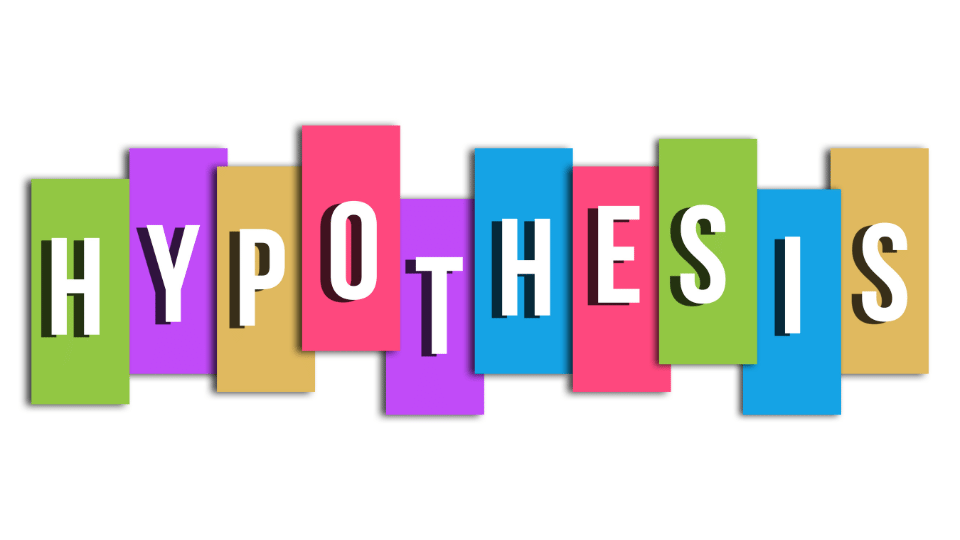In the realm of research, the alternative hypothesis, a key type of research hypothesis, plays a pivotal role in shaping the direction and outcomes of scientific inquiry. Understanding the alternative hypothesis is essential for researchers, as it not only guides the formulation of research questions but also influences the choice of statistical tests and the interpretation of results. This article delves into the significance of the alternative hypothesis in research, offering insights and examples that illustrate its critical function in the research process.
The alternative hypothesis, often denoted as Ha or H1, plays a crucial role in the realm of research methodology. It serves as a counterpoint to the null hypothesis, which posits that there is no effect or relationship between the variables being studied. In contrast, the alternative hypothesis asserts that there is indeed an effect or a relationship, suggesting that the observed data deviates from what would be expected under the null hypothesis. This fundamental distinction is essential for researchers as it guides the direction of their inquiry and the interpretation of their findings.

In statistical hypothesis testing, the alternative hypothesis is not merely a statement; it embodies the researcher’s expectations based on prior knowledge or theoretical frameworks. It is a declaration that there is a significant difference or correlation between the variables in question. This hypothesis is critical because it sets the stage for statistical testing, where researchers seek to gather evidence to support or refute it, ultimately contributing to the body of knowledge in their field.
The alternative hypothesis plays a crucial role in research methodology as it serves as the foundation for statistical testing. By proposing a specific effect or relationship between variables, it allows researchers to explore and validate their assumptions. This hypothesis is essential for guiding the research design, as it helps in determining the appropriate data collection methods and analysis techniques.
Without a well-defined alternative hypothesis, researchers may struggle to interpret their findings or may inadvertently overlook significant relationships that could contribute to their field of study. A clear hypothesis supports meaningful analysis, ensuring that important relationships and findings are accurately identified and understood.
The alternative hypothesis fosters a deeper understanding of the phenomena being investigated. It encourages researchers to think critically about their predictions and the implications of their results, which in turn sharpens their focus and clarifies the relevance of their study outcomes.
By contrasting the alternative hypothesis with the null hypothesis, which asserts that no effect exists, researchers can effectively assess the strength of their evidence. This comparison enhances the rigor of the research, helping to clarify whether observed effects are due to real relationships or mere chance.
In essence, the alternative hypothesis is not just a statement; it is a catalyst for inquiry and innovation. It challenges existing theories, promotes critical analysis, and opens new avenues for discoveries, ultimately contributing to the advancement of knowledge in the field.
To illustrate the concept of Ha in a quantitative research context, consider a study examining the relationship between the amount spent at a restaurant and the tip left by customers. The null hypothesis (H0) might state that there is no correlation between the bill amount and the tip percentage. In contrast, the Ha asserts that there is a statistically significant correlation, suggesting that as the bill amount increases, the tip percentage also rises. This assumption is grounded in the expectation that higher spending may lead to higher tipping, reflecting a common social norm.
In another example, imagine a study investigating the effectiveness of a new medication on reducing blood pressure. Here, the null hypothesis would claim that the medication has no effect on blood pressure compared to a placebo. On the other hand, Ha proposes that the medication does lead to a significant reduction. This Ha is essential as it directs the research design, data collection, and statistical analysis, ultimately helping researchers assess the treatment’s effectiveness. By clearly defining Ha, researchers can focus on gathering evidence to either support or refute this expectation, thereby advancing scientific knowledge.
Crafting a strong Ha begins with a comprehensive literature review. This step helps researchers identify existing gaps in knowledge, providing a foundation for formulating relevant research questions and understanding the context of the problem being investigated.

Once the knowledge gaps are clear, researchers can establish a specific research question. This question serves as the basis for the alternative hypothesis, ensuring that it is directly tied to the study’s focus and purpose.

The alternative hypothesis should then be articulated as a clear statement reflecting the study’s expected outcome. Often framed in an if-then format, this structure helps enhance clarity and directs the research towards measurable outcomes.
A strong alternative hypothesis is both specific and testable. Researchers should define all variables involved, which will guide data collection methods and analysis, ensuring that the hypothesis can be empirically evaluated.
Lastly, the alternative hypothesis must be mutually exclusive from the null hypothesis—if one is true, the other must be false. This clear distinction allows for meaningful conclusions, strengthening the research’s contribution to the broader field.
By following these steps, researchers can create an effective alternative hypothesis that provides direction, ensures rigor, and adds value to their academic discipline.
One of the primary challenges in defining an alternative hypothesis is achieving a balance between specificity and testability. Researchers must ensure that the hypothesis is precise enough to offer clear direction for the study, yet broad enough to allow for various potential outcomes. This balance is crucial to avoid ambiguity and prevent overlap with the null hypothesis, which could make it challenging to draw definitive conclusions.
Another challenge in defining the alternative hypothesis is the potential for researcher bias. Unconscious expectations or reliance on previous findings may lead researchers to favor a particular outcome, unintentionally shaping the hypothesis to fit these expectations. Such bias can affect the objectivity of data interpretation, as results may be skewed to support the initial alternative hypothesis rather than being assessed on their own merit.
Real-world phenomena are often complex, and this can lead to the possibility of multiple alternative hypotheses for a single research question. Defining a single, clear alternative hypothesis may be difficult in such cases, as researchers need to carefully choose the hypothesis that best aligns with their research objectives. This complexity can complicate research design, analysis, and the interpretation of findings, adding another layer of difficulty to hypothesis development.
These challenges highlight the need for careful consideration and methodological rigor in defining an alternative hypothesis to ensure clarity, accuracy, and relevance in research findings.
In conclusion, the alternative hypothesis is fundamental in research methodology, acting as a counterpoint to the null hypothesis and guiding both the design and interpretation of studies. By clarifying what researchers aim to confirm or refute, the alternative hypothesis provides a foundation for statistical testing and analysis, helping to structure the research in a meaningful way. A well-defined hypothesis not only adds rigor to the study but also enhances the clarity and focus of the investigation.
However, developing a strong alternative hypothesis presents challenges, including potential bias and the risk of misinterpreting data to fit expected outcomes. Despite these challenges, a carefully constructed alternative hypothesis strengthens the validity of findings, encourages critical thinking, and deepens understanding of the research topic. Acknowledging both its strengths and limitations remains crucial for researchers aiming to contribute valuable insights and advance knowledge across various fields.